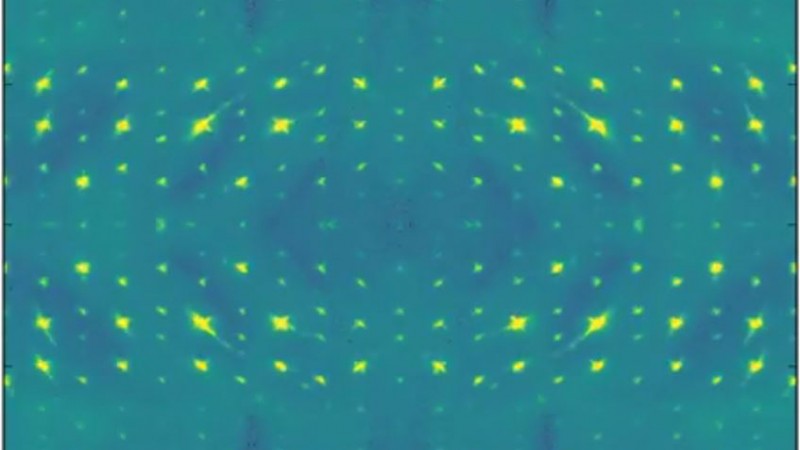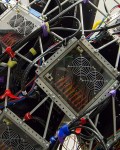A long-studied, yet still elusive spin-chain ladder compound Sr14Cu24O41, commonly known as the “telephone number compound,” has yet to reveal all its secrets to researchers. However, no secret is safe once seen through the eye of the neutron.
With an elemental composition that looks like a multi-digit British phone number, the aptly dubbed telephone number compound—a magnetic superconducting material—is made up of two intertwining lattice structures. This arrangement presents a challenge when trying to characterize the compound’s true structure as the competition between the two overlapping lattices can cause some confusion—but that was before the combination of neutron scattering and high-performance computing.
In magnetic materials, atoms themselves behave like small magnets—something they have in common with neutrons. When neutrons scatter off materials, they provide insight into how the atoms are arranged without compromising the sample, making them ideal tools for studying complex magnetic structures.
By combining Mantid visualization software with neutron diffraction measurements gathered at the Spallation Neutron Source’s TOPAZ instrument, beam line 12, researchers have created a real-time fantastic voyage through each layer of reciprocal space to record and determine the structure and relationship of the intertwining lattices.
This better understanding will enable researchers to further develop the material’s potential for advanced electronic devices.
Contributing researchers include Arsen Goukassov, Xavier Faberge, and Iurii Kibalin from the Laboratoire Léon Brillouin at the Saclay Nuclear Research Centre, France.
SNS is a Department of Energy Office of Science User Facility. UT-Battelle manages ORNL for the DOE’s Office of Science. The Office of Science is the single largest supporter of basic research in the physical sciences in the United States, and is working to address some of the most pressing challenges of our time. For more information, please visit http://science.energy.gov/.





